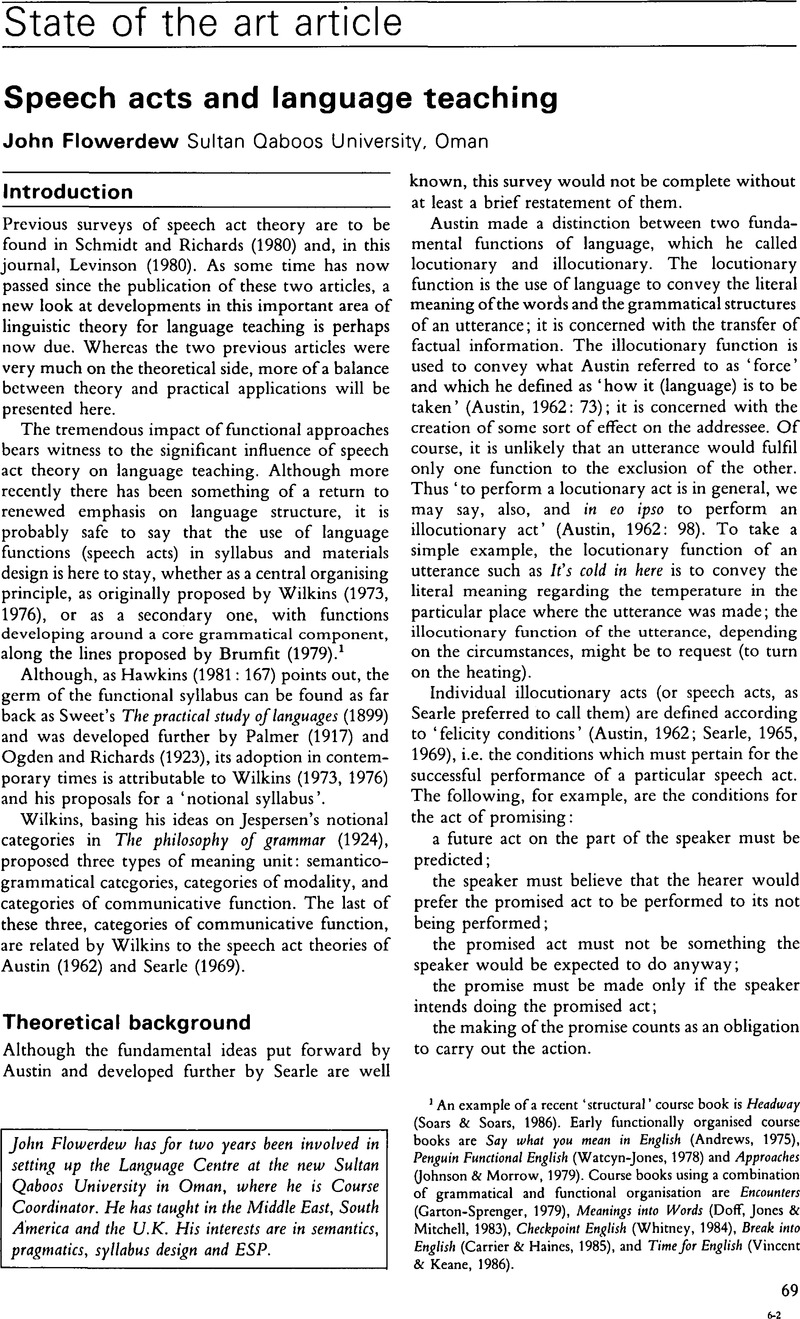Crossref Citations
This article has been cited by the following publications. This list is generated based on data provided by Crossref.
Flowerdew, John
1990.
Problems of Speech Act Theory From an Applied Perspective*.
Language Learning,
Vol. 40,
Issue. 1,
p.
79.
Rose, Kenneth R.
1992.
Speech acts and questionnaires: The effect of hearer response.
Journal of Pragmatics,
Vol. 17,
Issue. 1,
p.
49.
Greyling, W. J.
1993.
Making Predictions About Learner Experiences: Applied Linguistics and Decision-Making in the Classroom.
South African Journal of Linguistics,
Vol. 11,
Issue. sup18,
p.
189.
Rose, Kenneth R.
1997.
Pragmatics in teacher education for nonnative‐speaking teachers: A consciousness‐raising approach.
Language, Culture and Curriculum,
Vol. 10,
Issue. 2,
p.
125.
Castellà, Josep M.
Comelles, Salvador
Cros, Anna
and
Vilà i Santasusana, Montserrat
2006.
“Yo te respeto, tú me respetas”. Estrategias discursivas e imagen social en la relación comunicativa en el aula.
Infancia y Aprendizaje,
Vol. 29,
Issue. 1,
p.
31.



